-
About
- About Listly
- Community & Support
- Howto
- Chrome Extension
- Bookmarklet
- WordPress Plugin
- Listly Premium
- Privacy
- Terms
- DMCA Copyright
- © 2010-2025 Boomy Labs
 Marc Binkley
Marc Binkley
Listly by Marc Binkley
Changes in technology precede changes in behaviour.
So what happens to business when the technology it uses to communicate and create value shifts?
Business will be social.
The characteristics of social business mimic the characteristics of the technology.
Business will be more open, collaborative, networked, transparent, adaptive and nimble.
The following list provides evidence of this shift and resources to learn more.
Source: http://www.edelmandigital.com/wp-content/uploads/social-business1.jpg

As one of the fastest growing networking companies in high tech, Enterasys has produced 3 years of consecutive top-line year-over-year revenue growth, and a net promoter score of 81 - yes, the NPS score is not a typo. In addition, they have grown 25% of sales from new customers and had less than 5% annual employee attrition.
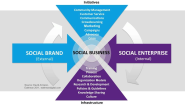
Today marks my two-year anniversary at Edelman, or what we affectionately like to refer to as an " Edelversary". So much has changed in the industry since joining the team here-we are truly working in a real-time business environment.

Traditional marketing - including advertising, public relations, branding and corporate communications - is dead. Many people in traditional marketing roles and organizations may not realize they're operating within a dead paradigm. But they are. The evidence is clear. First, buyers are no longer paying much attention.

In economics and business, a network effect (also called network externality or demand-side economies of scale) is the effect that one user of a good or service has on the value of that product to other people. When network effect is present, the value of a product or service is dependent on the number of others using it.
The network effect provides the basis for Liz Wiseman's work in Multipliers. The value of the organization should increase the more people you add.
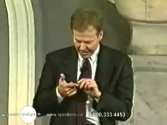
Peter Senge is a Senior Lecturer at M.I.T., and Chairperson of the Society for Organizational Learning. He is the author of the widely acclaimed book, The Fifth Discipline: The Art and Practice of The Learning Organization, which was identified by the Harvard Business Review as one of the seminal management books of the past 75 years.
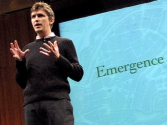
Outside.in's Steven Johnson says the Web is like a city: built by many people, completely controlled by no one, intricately interconnected and yet functioning as many independent parts. While disaster strikes in one place, elsewhere, life goes on.

Organizations with strong, adaptive cultures enjoy labor cost advantages, great employee and customer loyalty, and a smoother on-ramp in leadership succession. A book excerpt from The Ownership Quotient: Putting the Service Profit Chain to Work for Unbeatable Competitive Advantage by HBS professors Jim Heskett and W. Earl Sasser and coauthor Joe Wheeler .

John Maeda, President of the Rhode Island School of Design, delivers a funny and charming talk that spans a lifetime of work in art, design and technology, concluding with a picture of creative leadership in the future. Watch for demos of Maeda's earliest work -- and even a computer made of people.
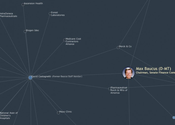
Management is undoubtedly one of humankind's most important inventions. For more than a hundred years, advances in management-the structures, processes, and techniques used to compound human effort-have helped to power economic progress. Problem is, most of the fundamental breakthroughs in management occurred decades ago.

Communication is one of the most important skills anyone can have, in business and in life. As individuals and as a species, I believe we will be happier and more productive if we can improve our ability to communicate. This blog is dedicated to that effort. Join the conversation!

Many years ago, I watched a most unusual puppet show at the Surajkund Mela, one of India's most popular crafts fairs. Puppeteers usually conceal themselves behind a screen, as we all know, and the puppets take center stage. At the Surajkund show, though, the puppeteers were entirely visible, and the audience could see them talk, sing, and emote along with their puppets.

"How can inflexible organizations synchronize with the dynamic customer?" Summary: The customer journey has evolved, yet organizations have failed to recognize and adapt to the change. Today, the new customer is empowered to make faster, smarter, more-informed decisions using technology, for instance, by accessing real-time information on their mobile devices or connecting with trusted peers across open and closed social networks.
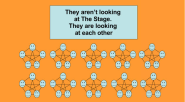
Wherein it's my job to bootstrap the newspaper's online connections to local bloggers and community members, launch hyperlocal sites comprised mostly of stories written by The People Formerly Known As The Audience, and manage them.
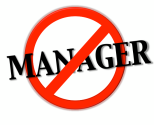
Idea in Brief How essential is it to have layers of executives supervising workers? Managers are expensive, increase the risk of bad judgment, slow decision making, and often disenfranchise employees. Yet most business activities require greater coordination than markets can provide.

It's hard to talk about management innovation without tipping your hat to W.L. Gore, the venerable maker of Gore-Tex and a host of other pioneering materials and products as diverse as synthetic vascular grafts, Elixir guitar strings, and Glide dental floss.

A democratic workplace?
It is possible. After 25 years of growth in all kinds of conditions, this new business model is much more sustainable than the traditional command and control mechanism

Read it.
Thesis #1
Markets are conversations.
This was written in 1999 before there was such a thing as "social media"

In today's increasingly volatile business environment, without the priorities of the living company, most managers will find that their companies do not have the habits to accomplish what they hope to achieve.

The world is changing much more rapidly than most people realize, says business educator Eddie Obeng -- and creative output cannot keep up. In this spirited talk, he highlights three important changes we should understand for better productivity, and calls for a stronger culture of "smart failure."
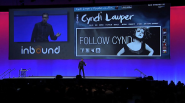
David Meerman Scott kicked off HubSpot's Inbound 2012 conference in Boston with a lively keynote titled "Inbound Now" detailing how to get found as people search for products and services on the Web and mobile devices like Androids and iPads.

A sample Watson smartphone app. IBM's question-answering Watson supercomputer is building quite the résumé. First it won a much-publicized showdown against the two greatest Jeopardy! champions of all time, then it went to medical school and emerged as a budding oncologist. Now Watson has a new job--as a customer-service agent with [...]
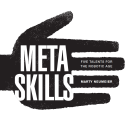
Marty Neumeier, author of Brand Gap and Zag, has a brand new book. Metaskills: Five Talents for the Robotic Age (to be released in January 2013) is a 21st-century handbook for navigating creative waters. Neumeier, who for many years published and edited Critique magazine, calls himself director of transformation for his Liquid Agency, which specializes in brand marketing.

Rotman School Dean Roger Martin explains why business people don't need to understand designers, they have to become designers. Produced by NeoCon.
